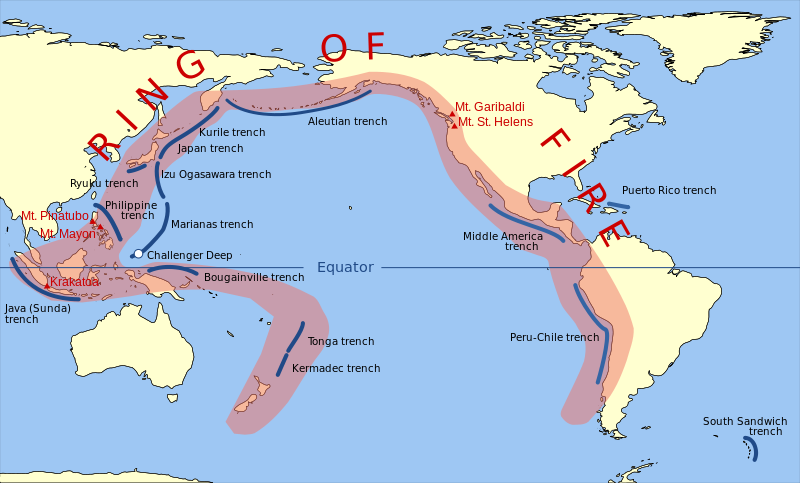
Click to enlarge
The 8.2 earthquake that shook northern Chile and surrounding countries late Tuesday night was one of a string of recent earthquakes along what is known as the "Ring of Fire," a circle of quake-prone areas on the Pacific Rim.
A magnitude 5.1 quake hit Los Angeles last week, followed by aftershocks along the California coast. And South America will be on the lookout in coming days for aftershocks that have already started following Tuesday night's temblor.
Both cities lie along the so-called Ring of Fire, where two plates underneath the earth's surface occasionally bump up against other plates, according to Kate Hutton, staff seismologist at California Institute of Technology.
"
That affects South America, the California coast, Alaska, Japan, the Philippines. Basically any places around the Pacific Rim are at risk," she said.
The 9.0 magnitude quake that hit Japan and cause the Fukushima meltdown in 2011 was on the Pacific's Ring of Fire.
Hutton said the current risk is not greater because California and Chile experienced quakes.
"The biggest risk is aftershocks for the 8.2 in the same area where the 8.2 occurred. They'll become less frequent with time, but the risk still exists for days and weeks," Hutton said.
Scientists still don't have a way to predict when and where earthquakes will hit, so it is impossible to say whether other quakes will strike along rim areas, she said.
The most susceptible areas on the Ring of Fire include such populated cities as Santiago, Chile; Los Angeles and San Francisco, California; Seattle, Washington; Tokyo, Japan; and Lima, Peru.
"The most obvious aspect of earthquake distribution is its randomness in time," Hutton said, "though not geography."
No kidding.
Even a broken clocks right twice a day.
We can all feel safe now,scientists have spoken.